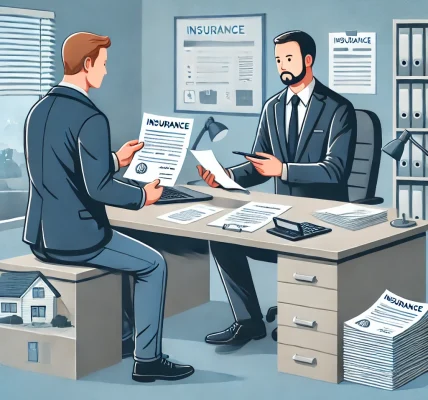Receiving a rejection on your insurance claim can be frustrating and stressful. However, a denial does not always mean the end of the road. Many claim denials can be overturned with the right approach and a well-prepared appeal. This DIY guide will walk you through the common reasons for claim rejections and the steps you can take to successfully appeal a denied claim.
Understanding Why Claims Get Rejected
Before you proceed with an appeal, it is crucial to understand why your claim was denied. Some of the most common reasons include:
1. Lack of Coverage
Your policy may not cover the specific incident or damages you are claiming.
- Solution: Review your insurance policy carefully to determine if your claim falls under an exclusion.
2. Incomplete or Incorrect Information
Errors in your claim submission, such as missing details or incorrect data, can lead to rejections.
- Solution: Double-check all information before submitting and provide accurate documentation.
3. Missed Deadlines
Insurance companies have strict timelines for filing claims. Missing the deadline may result in automatic rejection.
- Solution: Always submit claims as soon as possible and note any deadlines in your policy.
4. Insufficient Documentation
If you fail to provide adequate proof, such as receipts, medical reports, or photos, your claim might be denied.
- Solution: Gather all necessary documents before submitting the appeal.
5. Claim Filed for a Pre-Existing Condition
Some policies do not cover damages or injuries related to pre-existing conditions.
- Solution: Review your policy’s terms to confirm whether your claim falls under this category.
Steps to Appeal a Denied Insurance Claim
If you believe your claim was wrongly denied, follow these steps to file a successful appeal.
Step 1: Review the Denial Letter
Insurance companies are required to provide a written explanation for claim denials. Read this letter carefully to understand the specific reason behind your rejection.
Step 2: Gather Additional Evidence
If your claim was denied due to lack of documentation, collect more supporting documents, such as:
- Photos or videos of damages
- Receipts for repairs or medical expenses
- Police reports, witness statements, or expert assessments
Step 3: Contact Your Insurance Provider
Before submitting a formal appeal, call your insurance company and discuss the reason for the denial. Sometimes, minor errors or missing documents can be corrected without a full appeal.
Step 4: Submit a Formal Appeal Letter
If your initial discussion does not resolve the issue, draft a formal appeal letter. Your letter should include:
- Your policy number and claim reference
- A clear explanation of why you believe the denial was incorrect
- Additional evidence supporting your claim
- A request for reconsideration
Step 5: Keep a Record of Communications
Maintain a log of all phone calls, emails, and letters exchanged with your insurer. This record can be useful if further action is needed.
Step 6: Request a Review by a Supervisor
If your appeal is not successful at the initial stage, request that a supervisor or claims adjuster re-evaluate your case.
Step 7: Seek External Assistance
If your appeal is repeatedly denied and you still believe your claim is valid, consider the following options:
- Contact your state’s insurance regulatory agency to file a complaint.
- Seek assistance from a public insurance adjuster.
- Consult a legal professional for guidance on further actions.
Preventing Future Claim Denials
To reduce the chances of future claim rejections, follow these best practices:
- Understand Your Policy: Regularly review your policy to ensure you know what is covered.
- File Claims Promptly: Avoid delays and submit claims as soon as possible.
- Provide Complete Documentation: Always attach all necessary supporting documents.
- Communicate Clearly: Keep open and clear communication with your insurance provider.
Final Thoughts
A rejected insurance claim does not have to be the final word. By understanding the reasons behind claim denials and following the correct appeal process, you can improve your chances of overturning the decision. Stay proactive, organized, and informed to ensure a smooth insurance claim process and protect your rights as a policyholder.



